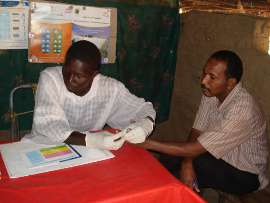Objectives/approaches
Goal
The goal of the malaria control and elimination programme is interruption of malaria transmission, in areas where it is feasible, and elimination of malaria as a public health problem in areas where elimination is not possible with the current tools.
Objectives
The Eastern Mediterranean Region spans three different eco-epidemiological zones and includes countries with wide variation in the status of socioeconomic development. The diversity of the environment influences the malaria situation and is a major determinant of success in malaria control between, and even within, countries. To address these variations, the regional malaria programme has categorized the countries of the Region into three groups (based on information available in 2010). A specific strategic objective has been identified for each group.
Group 1: Countries with moderate/high malaria burden, weak health systems, and/or complex emergencies
Objective: To continue reducing the incidence of malaria by the end of 2015 (>75% in comparison to 2000) and reduce malaria mortality to zero in all countries
The countries of this group are currently Afghanistan, Djibouti, Pakistan, Somalia, Sudan, South Sudan and Yemen. They represent about 48% of the population of the Region. These countries have areas with high risk of malaria transmission or are threatened by epidemics and or complex emergency situations.
Afghanistan reported reductions in confirmed malaria cases of > 50% between 2000 and 2010. Djibouti, Pakistan, Somalia, Sudan, South Sudan and Yemen have not reported consistent decreases in the number of cases. Significant reduction of cases was recorded in certain geographic areas, such as Khartoum/Sudan and Socotra/Yemen, the latter is almost malaria free with no local cases since 2006.
Malaria is considered to be important heath problem. Inadequacy, or in some instances lack, of human resources and capacity at the country level is one of the major constraints impeding development, implementation and sustainability of malaria control in the countries of this group. Management of the logistics system continues to be a major problem due to high operational costs. The security situation in some countries also continues to pose a challenge.
Lack of human resources and appropriate infrastructure are the main obstacles for implementation of comprehensive malaria control activities. Priority is being given to strengthening the capacity malaria control programme especially at lower levels for country-wide implementation of malaria control interventions. Ensuring universal access to effective diagnostic and treatment and strong surveillance systems for testing, treating and tracking every case and rational use of cost-effective prevention measures should be emphasised in all malaria-risk areas.
Group 2: Countries with low malaria transmission limited to small geographic areas and targeting malaria elimination
Objective: To interrupt malaria transmission in 50% of endemic districts
This group currently comprises two countries, Islamic Republic of Iran and Saudi Arabia, with 17% of the regional population. These countries have achieved a steady decline in malaria over the past decade. The remaining malaria in these countries includes all epidemiological types of malaria (Palaearctic and Oriental types in the Islamic Republic of Iran and Afrotropical type in Saudi Arabia). The main characteristic for these countries is that the malaria control programme is self-reliant, has strong political and financial support from the national authorities and is also well-supported by developed health systems at the central and peripheral levels. Certain epidemiological and socioeconomic factors, such as education, equity in resource allocation for marginalized populations and general development in social and economic infrastructure, also contribute favourably towards the objective of malaria elimination.
Islamic Republic of Iran has a low record of 1710 local cases in 2011 with significant reduction of P. falciparum and mixed cases (only 208 cases). With planned intensification of elimination efforts it is expected that falciparum malaria will be eliminated in the very near future.
In 2011 Saudia Arabia reported 69 local cases only compared to 4736 in 2000. Saudi Arabia is very close to elimination, yet facing several challenges that are anticipated in the last mile of elimination. This requires a very strong and surveillance system and border coordination with Yemen.
The major challenges for achieving the objectives and sustaining these achievements are competing priorities from other communicable and noncommunicable diseases, huge population movement from several malaria-endemic countries and the need for cooperation and coordinating malaria activities with neighbouring Yemen especially across the border areas.
Group 3: Countries which have eliminated malaria
Objective: To prevent re-establishment of malaria transmission
This group includes countries in which malaria has been eliminated long time ago (Bahrain, Jordan, Kuwait, Lebanon, Libya, occupied Palestinian territory, Qatar and Tunisia), and those with certification of elimination in last decade: Morocco, United Arab Emirates. It also includes countries that interrupted local transmission for more than three years in the last decade, but elimination not certified (Egypt, Iraq, Oman and Syrian Arab Republic). Few local cases may occur as a result of importation but the programme is strongly committed and capable of proper response to prevent re-establishment of local malaria transmission.
The main challenge for this group is to prevent re-establishment of local malaria transmission in the presence of continuous population movements from malaria-endemic countries. Other challenges include maintaining collaboration in border areas and awareness of malaria risk and the skills to diagnose and promptly treat the disease among the health staff of governmental and private health care facilities. It is equally important to maintain malaria awareness among members of the community, particularly among those individuals regularly travelling to malaria-endemic countries.
Approaches
Strategic approach 1: Promote and facilitate universal access of populations at risk to reliable diagnosis and effective treatment of malaria
 Prompt and effective treatment of malaria remains a key intervention in reducing malaria morbidity and mortality. The challenges to providing adequate treatment are: treatment of fever cases as malaria without parasitological confirmation; widespread resistance of plasmodium falciparum to chloroquine and increasing resistance to other antimalarial medicines including emerging resistance to ACTs; wide availability of substandard and counterfeit antimalarial medicines; and weak health systems that are unable to deliver timely diagnosis and treatment and provide timely surveillance information, especially to remote and underserved populations.
Prompt and effective treatment of malaria remains a key intervention in reducing malaria morbidity and mortality. The challenges to providing adequate treatment are: treatment of fever cases as malaria without parasitological confirmation; widespread resistance of plasmodium falciparum to chloroquine and increasing resistance to other antimalarial medicines including emerging resistance to ACTs; wide availability of substandard and counterfeit antimalarial medicines; and weak health systems that are unable to deliver timely diagnosis and treatment and provide timely surveillance information, especially to remote and underserved populations.
 Strategic approach 2: Promote and facilitate application of effective preventive measures against malaria for populations at risk
Strategic approach 2: Promote and facilitate application of effective preventive measures against malaria for populations at risk
Application of Preventive measures in the framework of integrated vector management need to be applied. Recognizing the weak capacity of health systems to deliver vector control interventions and the need to strengthen these health systems, a regional strategic framework on integrated vector management was developed. The strategy is based on principles of strengthening intersectoral and intrasectoral coordination, partnership at all levels, decision-making criteria at the lowest level, and synergy of sustainable and evidence-based interventions.
Strategic approach 3: Support prevention and control of malaria in epidemic and complex emergency situations
Malaria epidemics are quite frequent in countries of the Region. The regional strategy aims at the prevention or reduction of the impact of epidemics by early detection and timely response with the implementation of effective malaria control measures. The maximum benefit occurs when measures are implemented at the very early stages. This will require the development of a cost-effective surveillance system that includes forecasting, early warning and detection that would lead to either very early recognition of epidemics and immediate implementation of control measures or the implementation of preventive control measures before the epidemics start.
Strategic approach 4: Support countries to strengthen the capacity of malaria control programmes at national and district levels as part of a health system strengthening approach
The improvement of national institutional capacity for planning and management of malaria control is a crucial strategy for sustainable malaria control programmes. To address this, WHO will provide technical support to countries to develop their malaria control programmes, as part of the health care delivery system, in three interrelated domains: infrastructure and facilities; human resources; and information. WHO will also provide technical support for the establishment of efficient mechanisms for procurement and distribution and quality control of medicines, reagents, insecticides and other essential commodities.
Strategy approach 5: Strengthening partnership and coordination
Partnership is a key factor for the success of the malaria control/elimination strategy. The number of partnerships have been increased in all countries of the Region with a high malaria burden. Partners include governmental sectors other than the ministry of health, national and international nongovernmental organizations, the private sector, mass media, bilateral and multilateral agencies and funding institutions.
Strategic approach 6: Strengthen malaria surveillance, monitoring and evaluation
Strengthening the surveillance system, as a cross-cutting strategy, is crucial for producing results in disease control programmes. The surveillance system is needed for priority-setting, policy and decision-making and for planning, implementation and monitoring and evaluation purposes.
Strategic approach 7: Operational/applied research
Operational/applied field research will continue to be supported. The Regional Office, in close collaboration with national malaria programmes and institutions, will develop research priority themes that will enable countries to update their national strategies based on evidence and address the gaps in malaria control and elimination programmes.
Specific approaches/issues pertinent to malaria elimination
A malaria-free area is defined as an area in which there is no local malaria transmission and thus no indigenous cases occur. The only cases that may occur are those imported. At present, 13 countries of the Region are already free from malaria. In the remaining countries, malaria endemicity varies considerably. Target areas for elimination include residual foci of transmission, as well as larger more populous endemic areas where achieving a disease-free status is feasible.








